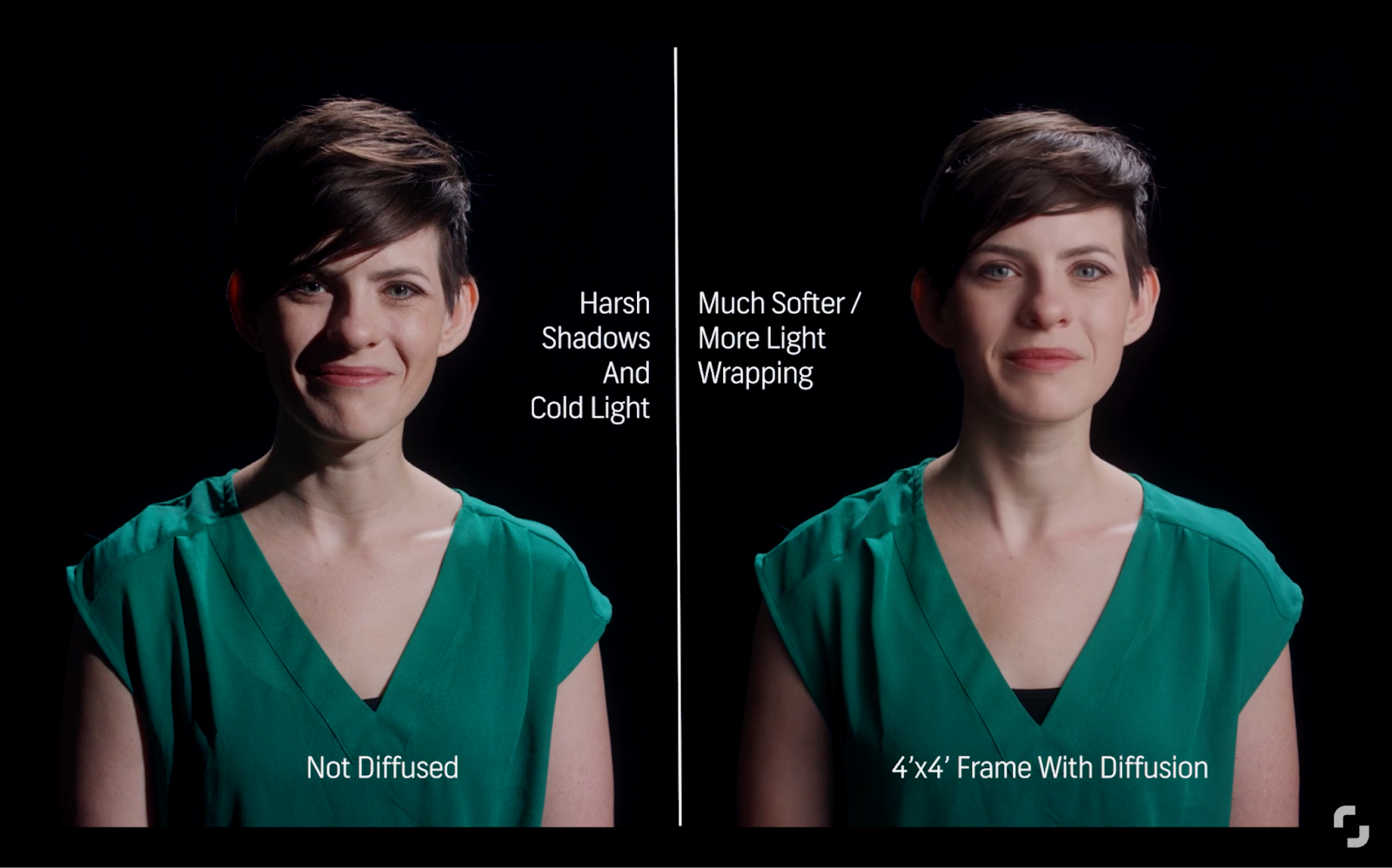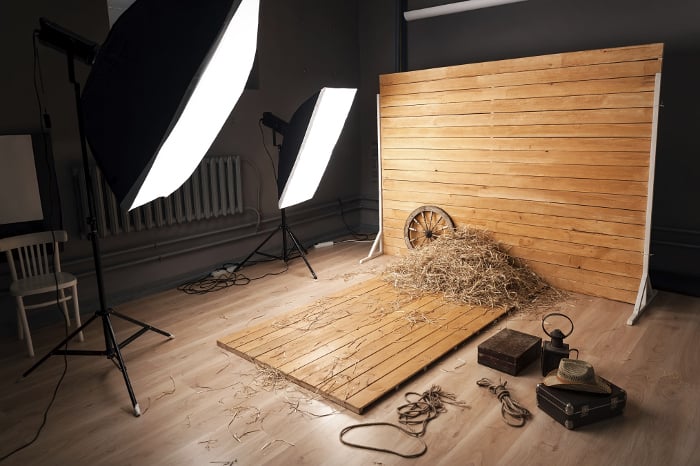
Jul 20, 2022
Ask any filmmaker (or photographer) what problem they deal with most often, and chances are they will say “lighting.”
That’s not to say it’s the only obstacle, or even the most annoying. But it is ever present. We could easily lay out a half-dozen reasons why lighting is the nemesis of filmmakers.
On one hand, it’s difficult to control because so many moving parts are involved — natural light, reflective material, the Kelvin scale, etc. On the other hand, how you light a shot can make all the difference in post-production and eventually the final product.
It’s worth investigating any tool or learning any trick to improve the quality of your lighting. And because diffusing light is an easy, cheap, and efficient way to adjust lighting, it’s something that every filmmaker should at least be aware of.
Before we get to why diffused light matters and how you can start to use it in your videos, let’s define what it is.
Light will bounce off most solid objects, which is why any good lighting kit comes with reflectors. But a light diffuser does the opposite — it blocks or reflects part of the light, but still allows enough to properly light a subject or scene.
When you are lighting a shoot, the quality of the light can be just as influential as the color temperature or the placement. And the better the quality — whether from proximity, brightness, etc. — the more detail you’ll get out of the subject you’re trying to light.
Diffused light can actually get you the best of both worlds. It’s the process of using a diffuser (which could be a DIY piece or something you bought in a lighting kit) to reduce harsh shadows or the glare of a light source you can’t get rid of on the set.
You can get soft lighting. Think of it as getting the benefits of a directional light, but also enjoying the aesthetics of indirect lighting.
That wasn’t exactly a textbook definition, but it gets across enough of the basics that you should have an idea of why diffused light matters. Now, we get to the fun part — what it looks like in practice, and what you need to start improving the quality of your lighting gear.

Here’s an example pulled from this tutorial video.
Even with nothing but the image above, you can see a pretty big difference. Diffused light is a more natural, healthy look, and — in a weird way — can actually help you balance your color temperature if you use the same light diffuser (or DIY material) on different lights.
The fun thing about using a diffuser is that you can pair it with a reflective material to bounce light, which gives you control over the direction of the light, the intensity of the light, and the level of detail that the light reveals.
We’ve talked about motivated lighting before, but light diffusion is a pretty big factor in that.
Motivated lighting is a fancy name for any light source that is out-of-frame and also enhances, spreads, or somehow affects the practical light in the scene.
You really can’t take advantage of that idea without using a light diffuser. The control it gives you doesn’t just make your footage look better — it allows you to turn any light source into something that adds depth, interest, or emotion to a shot. And that’s exactly the sort of trick a visual storyteller wants to have on any video shoot.
Let’s pretend you’re filming outdoors, and the noonday sun is creating harsh shadows on your subject. Setting up a sheet overhead doesn’t really make sense, but waiting for a passing cloud would provide a natural diffuser that creates even light distribution.
But obviously you won’t always have access to an agreeable cloud. Your most realistic option is to find a good lighting kit, something that includes at least one type of diffuser.
The most obvious place to start is with a dedicated softbox lighting kit. You could also go for an umbrella diffuser — they work great but aren’t quite as adaptable as soft boxes.

Either one offers a relatively affordable option to diffuse light in your video projects. (And if you already have some lighting equipment, you could look for an individual piece — it just won’t be as good of a bargain as if you bought a bundle.)
Then again, those options deal with video production on a set. But if you’re shooting outdoors or in a space with natural lighting, a softbox or an umbrella might not be enough for that job. Or maybe you can’t afford a new lighting kit, but you still want to create diffused light on your next project. What options do you have?
There have never been more tutorials about DIY filmmaking, so in a way you have as many options as you can think of…so long as your diffuser is the right material. You could use a bedsheet, or a thin set of curtains, or even a lampshade.
Every filmmaker has their own ideas for DIY solutions. And chances are that as you spend more time creating content, you’ll discover a few unique techniques we might not have heard of.
For the purpose of this article, however, we’re going to look at some of the most popular DIY lighting solutions that help you diffuse light without spending any of your budget on new equipment. (But you may end up needing to spend a few dollars on something.)
A pillowcase is an ingenious and inexpensive way to make a DIY softbox, catching and diffusing all of the light from a source. It works for a stand light, a lamp across the room, or — if you tape it up — even to help soften the light from a small window.
And while you’ve probably seen (or maybe even used) a bedsheet as a light diffuser, you can also use a shower liner. The frosted plastic holds its shape better than a sheet, but you’ll want to make sure you don’t get a clear one because that plastic surface could reflect light.
Other options include a white trash bag, a thin T-shirt, or even parchment paper. The different thickness and texture of each item means the quality of your diffused lighting could be hard to predict. But if you’ve already got these things around your house, it’s a cheap way to experiment and see if any of them work with the light sources you want to work with.
Using a DIY technique can help you create diffused light on the cheap. More importantly, it can also help you address some of the many light-related problems that filmmakers have to solve.
Want to know how to deal with direct sunlight? How to add extra light sources but not cast harsh shadows? Or how to get the most out of your kit with a bounce light?
One answer for all of these questions is “diffused lighting.” Regardless of your lighting situation, light diffusion gives you a way to get the most out of the lighting on a set.
And if you want to find similar tips, tricks, and solutions to level up your filmmaking, here are some other articles from Soundstripe: